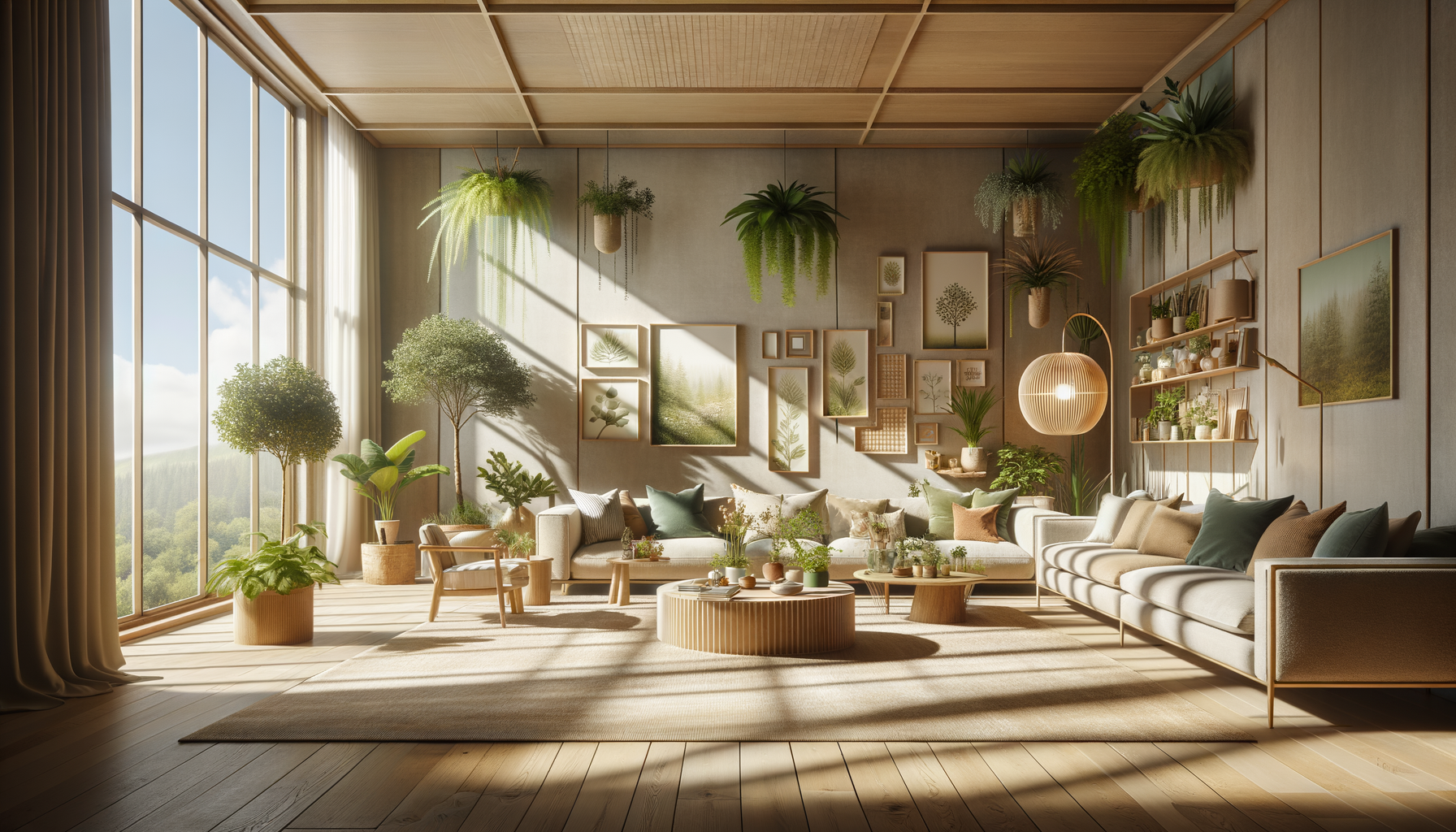“Infusing Nature into Your Living Spaces: Inspiring Biophilic Design Ideas from Instagram”

Biophilic design is one of the hottest trends sweeping the interior design world. If you’re not familiar with this term, no worries – we’re here to introduce you to this exciting concept. At its simplest, biophilic design seeks to harmonize our living environments with nature, creating spaces that feel calming, revitalizing and inspiring. Specifically, we’re diving into how this concept applies to one key space in your house: the living room.
1. Using Plants For A Natural Splash Of Green
Arranging an array of indoor plants is the most straightforward path towards achieving a biophilic living room. From hanging planters to towering fiddle-leaf figs, plants add vibrance, energy, and life to your space. They not only benefit the overall look of your living room but also purify the air by releasing oxygen and absorbing carbon dioxide. Various types of indoor plants like aloe vera, snake plants or money plants can also act as natural humidifiers. Research shows connecting with plant life can reduce stress and improve concentration.
2. Expanding Natural Light
In a biophilic designed room, natural light flows unobstructedly. Putting up heavy curtains or drapes can obstruct daylight. Hence, it’s advisable to use sheer curtains, venetian blinds or even remove window coverings altogether where privacy isn’t a concern. Skylights and larger windows are a great way to enhance incoming sunlight, energizing your living space throughout the day.
3. Incorporating Natural Materials
Biophilia is about blurring the lines between inside and outside. So incorporating natural elements like wood, stone, and even water features into your living room can create that seamless connection with nature. Furniture made from sustainably sourced wood or stone coffee tables not only brings in elements of nature but also creates a relaxing and soothing environment.
4. Earth Tones
Using nature-inspired shades for wall colors, furniture, and accessories can significantly enhance the biophilic aspect of your living room decor. From verdant greens to sandy beiges to sky blues, there’s a wide range of nature-derived hues to choose from – let your imagination fly!
5. Incorporating Bio-mimicry
Another fascinating aspect of biophilic design is bio-mimicry, which copies forms and patterns found in nature. Whether it’s through lamp shapes that resemble tree branches or rugs with dappled patterns like sunlight filtered through tree leaves, these touches can add life, depth and interest to your biophilic living room.
6. Enhancing Natural Ventilation
Allowing natural air to flow freely in your living room is crucial to achieving a full biophilic experience. This can be done via creating cross-ventilation, where air inlets and outlets are created on the opposite sides of the room for a natural breeze. Positioning ceiling fans or windows on opposite walls can also facilitate air movement.
7. Sensory Variety & Balance
Nature is not monotonous. It involves a variety of sensory stimuli – the sounds of birds singing, the scent of fresh flowers, the textures of leaves. Hence, biophilic design is not just about ‘looking’ natural but also ‘feeling’ nature. It is essential to balance and stimulate all our senses with sounds of trickling water, natural essential oil fragrances, soft throw blankets resembling grass, etc.
8. Include Art Inspired By Nature
Featuring nature-inspired paintings or photos can refine your biophilic design approach. It could be a painting of a scenic landscape, a mural with floral or fauna motifs, or even framed macro-photos of nature’s intricate details. It’s a simple but potent way to express the grandeur of the natural world within your living space.
With this newfound trend increasing in popularity, it’s undoubtedly the best time to consider a biophilic makeover for your living room. Not only aesthetically appealing, it promotes better health by reducing stress, enhancing mood, and improving air quality. So, if you’re planning to change up your home interiors, why not welcome nature in with a biophilic design inspired living room?
